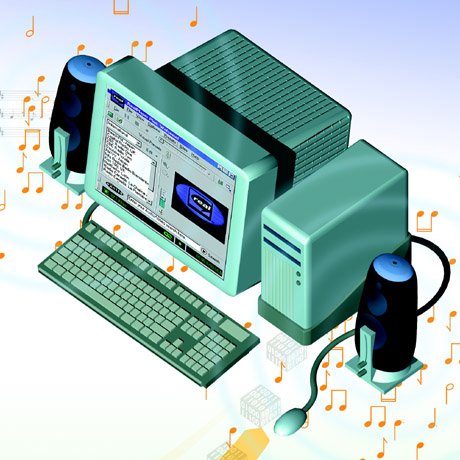
Possibly the most dramatic and remarkable part of the Internet is the multimedia content and entertainment you can find there. You can listen to music, sound clips, and live radio stations from your computer. You can share your favorite music files with others all over the world. You can watch video clips of the news and other events. And you can even have live videoconferencing with people from all over the world.
You can do all that with the Internet's audio and video capabilities. You won't need expensive hardware and software to do itfree or inexpensive software will do the trick, along with a sound card and speakers that ship with most computers, or that are available separately.
The Internet's multimedia capabilities go beyond mere playing of audio and video clips and listening to Internet radio stations. You can participate in virtual worlds and join in virtual chat sessions in which you build your own online persona, called an avatar, which communicates with other avatars. The Internet enables the creation of remarkable online multimedia content, combining animation, sound, and programming via technologies such as streaming audio and video, Flash, and multicast IP.
This section of the book discusses how major aspects of multimedia and entertainment on the Internet work. Chapter 36, "How Music and Audio Work on the Internet," covers audio and music. You'll see how audio files are sent to your computer and played. You'll look at how streaming audio works in detail. Streaming audio enables you to play sounds and music on your computer while the audio file is being transferred to your computer, so you don't have to wait for the file to download.
Chapter 36 also looks at the use of the most popular music format on the InternetMP3. MP3 files are nearCD-quality sound files, yet are small enough that they easily can be downloaded. This chapter also shows how Internet radio broadcasting works. Increasingly, radio stations broadcast live over the Internet so you can listen in using special software or just your browser. Many of these stations are Internet-only stations that broadcast only online, although many real-life radio stations around the world also broadcast over the Internet.
Chapter 37, "How iPods, iTunes, and Podcasting Work," examines the hardware and software that more than any other, has changed the way people buy and listen to music. It peers into the innards of the iPod, and shows you how that popular portable music player works. It also shows how the companion iTunes software works its magic. Finally, it explains how podcasting worksradio-like shows that can be subscribed to and downloaded to your PC, iPod, or other portable music player.
Chapter 38, "How Music Sharing and File Sharing Work," looks at one of the most controversial uses of the Internetthe way music files can be shared with others. It shows you the inner workings of file-sharing software that enables anyone to download their favorite music from other music lovers and make their music available to others as well. It also allows you to share other kinds of files, such as movies. The chapter also delves into the use of BitTorrent, the newest file-sharing software, which even the movie studios have begun to embrace.
Chapter 39, "How Multicast IP and the MBone Work," looks at multicast IP and the MBone. Multicast IP enables videos to be broadcast to many thousands of people simultaneously, without clogging up the Internet's backbone. The MBone is a high-speed Internet backbone used for transmitting multicast IP video across the Internet.
Chapter 40, "How Virtual Reality Is Created by VRML," examines virtual reality. Virtual reality enables the creation of virtual worlds3D creations on the Web through which you can walk, fly, or interact with your surroundings. As the bandwidth of the Internet increases, these virtual worlds are increasingly popular.
Finally, Chapter 41, "How Animation on the Web Works," looks at some of the most popular types of animation technologies, from the very simple to the very sophisticated. You'll learn how client pull and server push technologies enable the easy creation of simple animations. You'll also look at Shockwave, an extremely sophisticated way in which animation, audio, and other types of interactive technologies can be used to create powerful multimedia presentations on the Web. You'll even learn about the newest and most powerful kind of web animationFlashwhich goes several steps beyond the capabilities of Shockwave.